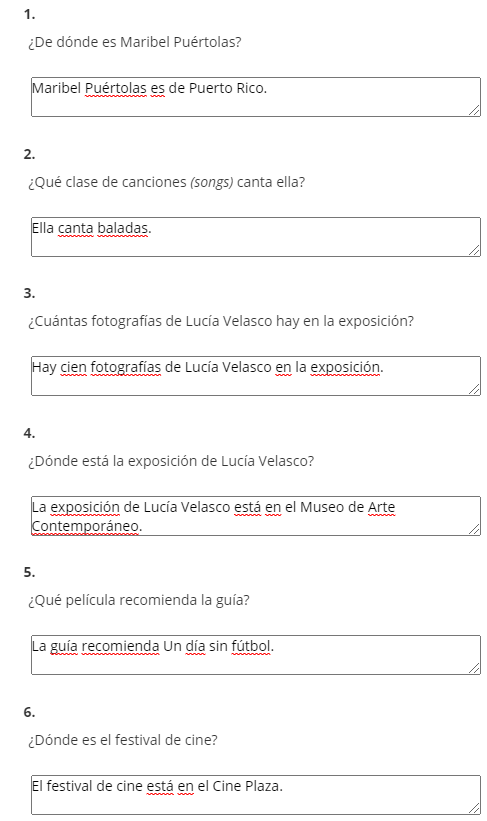Interpretive, Interpersonal, and Presentational Modes of Communication
Exploring Culture
The Competencia Cultural assignments that I completed this semester helped me to gain an understanding of Hispanic culture. These assignments involved watching a short video of a narrator discussing a specific topic related to Hispanic culture. The narrator would visit different locations in different countries and was often accompanied by native citizens who would speak with them in Spanish. The assignments also involved a quiz related to what was discussed in the video.

The first thing I noticed about Hispanic culture was how social everyone seemed. They were always gathered together walking, dancing, or just hanging out. Even people who had never met each other greeted by kissing on the cheek or hugging. This came as a surprise to me, as in my culture, we only hug people who are good friends or family.
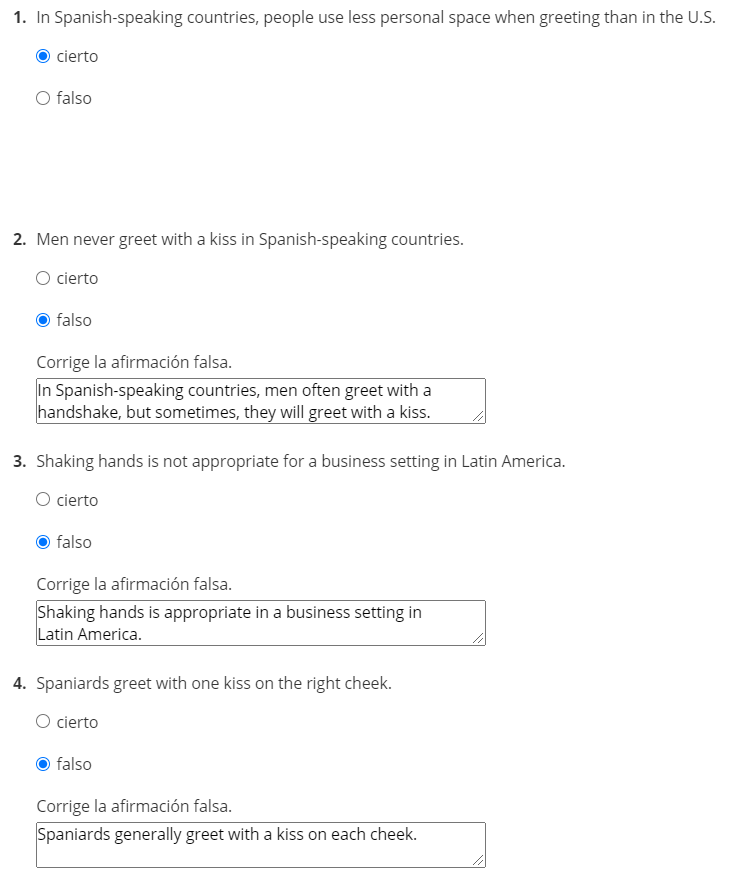

I also learned about the things that are important to people in the Spanish-speaking world: family, friends, and soccer! Soccer, or fútbol as it is called in Spanish, is a big part of Hispanic culture. Nearly everyone in Spain is a fan of soccer. For some games, such as games between the two most popular teams in Spain, El Barcelona and El Real Madrid, the whole Camp Nou stadium sells out months in advance.
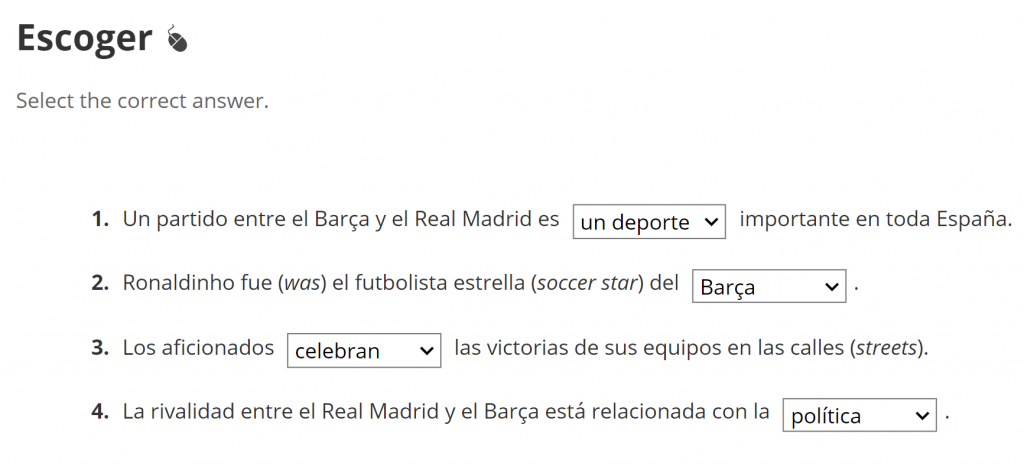
Interpersonal Communication
So far this semester, I have completed two interviews, which consisted of three to four minutes of talking only in Spanish with either a fellow student or my instructor about a designated topic.
The first interview that I did gave me a chance to apply all of the new vocabulary I had learned by having a full conversation in Spanish. In the first interview, while I feel like I utilized the vocabulary that I knew, I struggled with speaking naturally, and my speech came across as contrived. In the second interview, I think that I improved at speaking more naturally as if I was having a normal conversation.
Presentational Speaking
I have not completed any presentational speaking yet
Presentational Writing
This semester, I completed two compositions written entirely in Spanish. For the first composition, I wrote a brief description of myself with the purpose of posting it online to meet Spanish-speaking people. For the second composition, I wrote a letter to a friend describing my family.
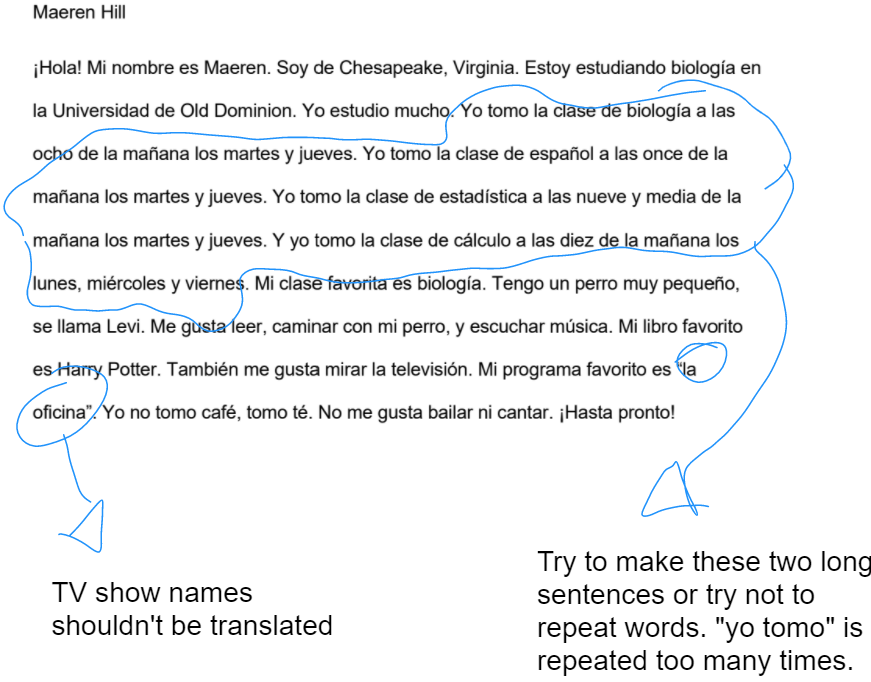
For my first composition, I made a few mistakes. The most difficult part for me was not getting the information across, but structuring the sentences in a way that sounded appropriate. For example, I repeated the phrase “yo tomo” too many times.
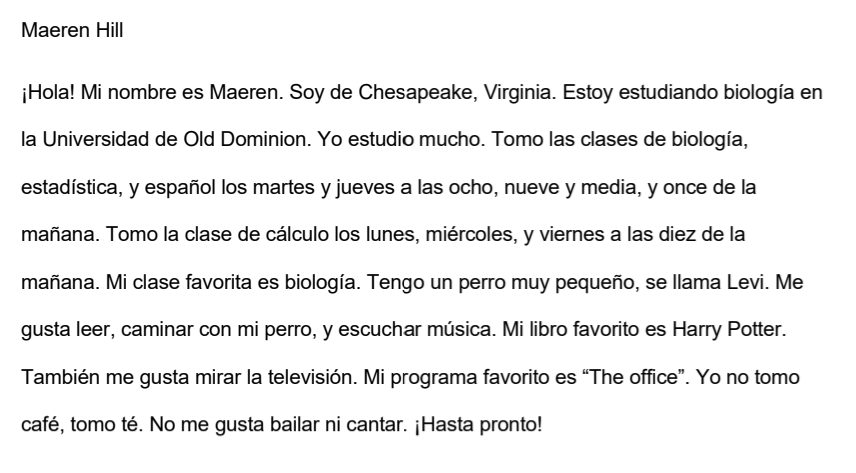
After receiving feedback on my draft, I rephrased the sentences without using “yo tomo” too many times.
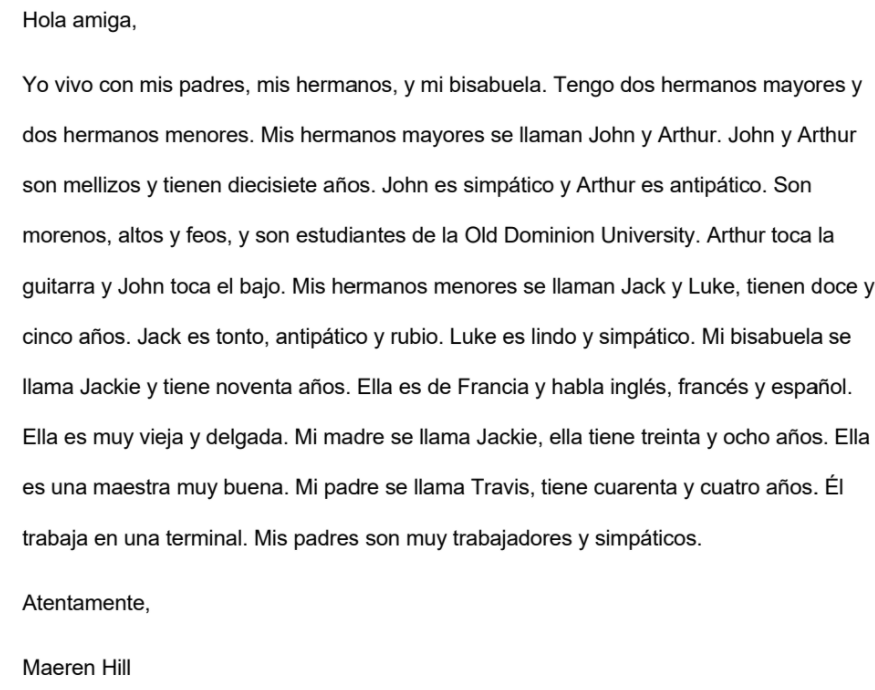
For my second composition, I did not struggle as much with sentence structure. My second composition did not have any mistakes pointed out by my instructor.
Interpretive Listening
This semester, I completed multiple Adventuras activities, which consisted of watching a video of characters speaking with each other entirely in Spanish. The characters would talk about various topics such as family, school, or hobbies.
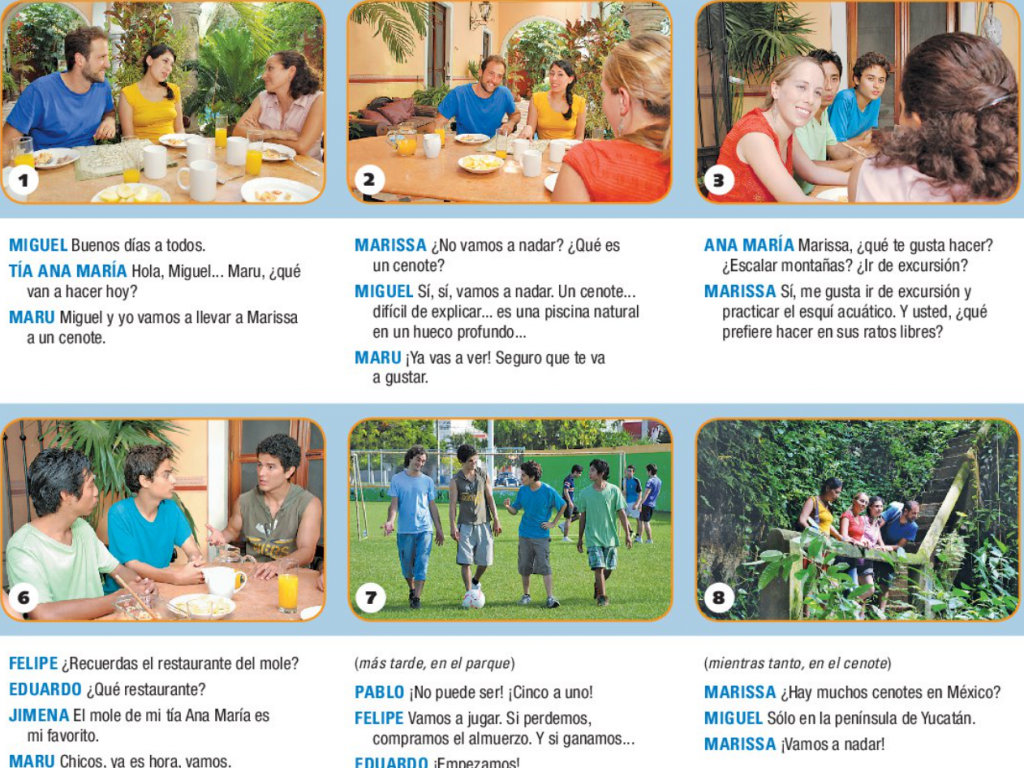
At first, I found it very difficult to understand spoken Spanish conversations. The speech sounded so fast and it was hard to figure out where one word ended and the next one started. One thing that helped me overcome this was reading the script for some of the scenes (as shown above) and then listening for those specific words and phrases when watching the video.
Interpretive Reading
The Lectura assignments that I completed this semester involved interpretive reading. These assignments consisted of reading a composition written entirely in Spanish such as a newspaper article, a brochure for a university, or an address book. After reading the composition, I completed a quiz related to what I read.

The most difficult part of the Lectura assignments was encountering words that I didn’t know. If I did not understand enough words in a sentence, it was hard to determine the overall meaning of the sentence or paragraph. However, I could sometimes figure out the meaning of the word based on context. If not, I would use a translating tool. Overall, the Lectura assignments helped me improve my understanding of Spanish grammar and sentence structure, as they put together the vocabulary that I already knew.
